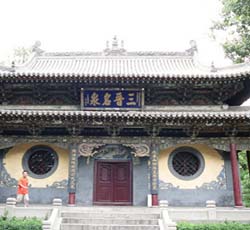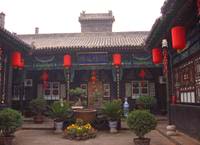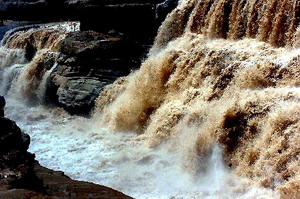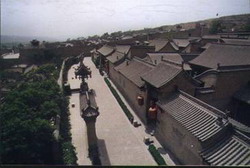Jin Ancestral Temple
Jin Ancestral Temple has a long history, which can be traced back to the Western Zhou Dynasty (11th century BC to 711 BC), when King Cheng made his younger brother Yu a leader of one of his states. Yu was an intelligent leader who devoted all his energies to making the state prosperous, so his descendants built a temple for him after his death, in order to honor his achievement.
 Saint Mother Hall, the oldest building in Jin Ancestral Temple, is one of the main reasons that so many visitors come to the temple. Together with the Flying Bridge across the Fish Pond, and the Offerings Hall, these exquisite buildings provide evidence of a new era in Chinese architecture. For example, the Flying Bridge across the Fish Pond is the only one of its kind that exists now; accordingly, it plays an important role in an investigation of the ancient bridges of China. Out of the hall, you'll see the second treasure, the cypress, said to be planted in the western Zhou Dynasty in the 11th century. It has been growing at an angle of about 40 degrees, and it's still alive. Isn't it a miracle? Some old cypresses have thick trunks, while others have strange shapes. Once I saw a cypress which even makes several circles at the top. Every tourist was surprised by the mystical nature.
Saint Mother Hall, the oldest building in Jin Ancestral Temple, is one of the main reasons that so many visitors come to the temple. Together with the Flying Bridge across the Fish Pond, and the Offerings Hall, these exquisite buildings provide evidence of a new era in Chinese architecture. For example, the Flying Bridge across the Fish Pond is the only one of its kind that exists now; accordingly, it plays an important role in an investigation of the ancient bridges of China. Out of the hall, you'll see the second treasure, the cypress, said to be planted in the western Zhou Dynasty in the 11th century. It has been growing at an angle of about 40 degrees, and it's still alive. Isn't it a miracle? Some old cypresses have thick trunks, while others have strange shapes. Once I saw a cypress which even makes several circles at the top. Every tourist was surprised by the mystical nature.
There are three additional wonders that draw people from across the world to the temple. These are: The Figures of The Maidservants, the Zhou Cypress and the Never Aging Spring. Each of the Figures of the Maidservants that stand in the Saint Mother Hall, colored clay sculptures made during the Song Dynasty (960-1279), are unique. Whether these statuettes are washing, sweeping or dancing, they are all sculpted in a vivid and natural way.
Jin Ancestral Temple was, to a certain extent, an imperial garden. Accordingly, some three hundred tablets were inscribed for it with writings by emperors, officials and poets, and these now line a scenic path in the temple. The most famous stele was written by the Emperor Taizong of the Tang Dynasty in 646, and it was kept in a pavilion which is now known as Zhen Guan Bao Han Pavilion. Taizong was one of the great emperors of Chinese history. The time from which he inherited the throne from his father became known as the Prosperity of Zhenguan, and people referred to the calligraphy written by him as "Bao Han", meaing a kind of treasure.





